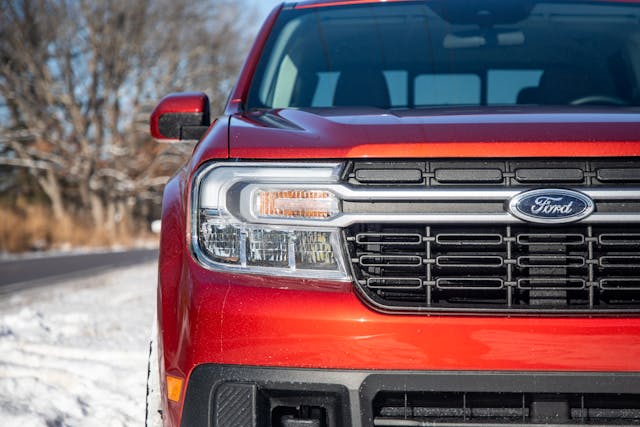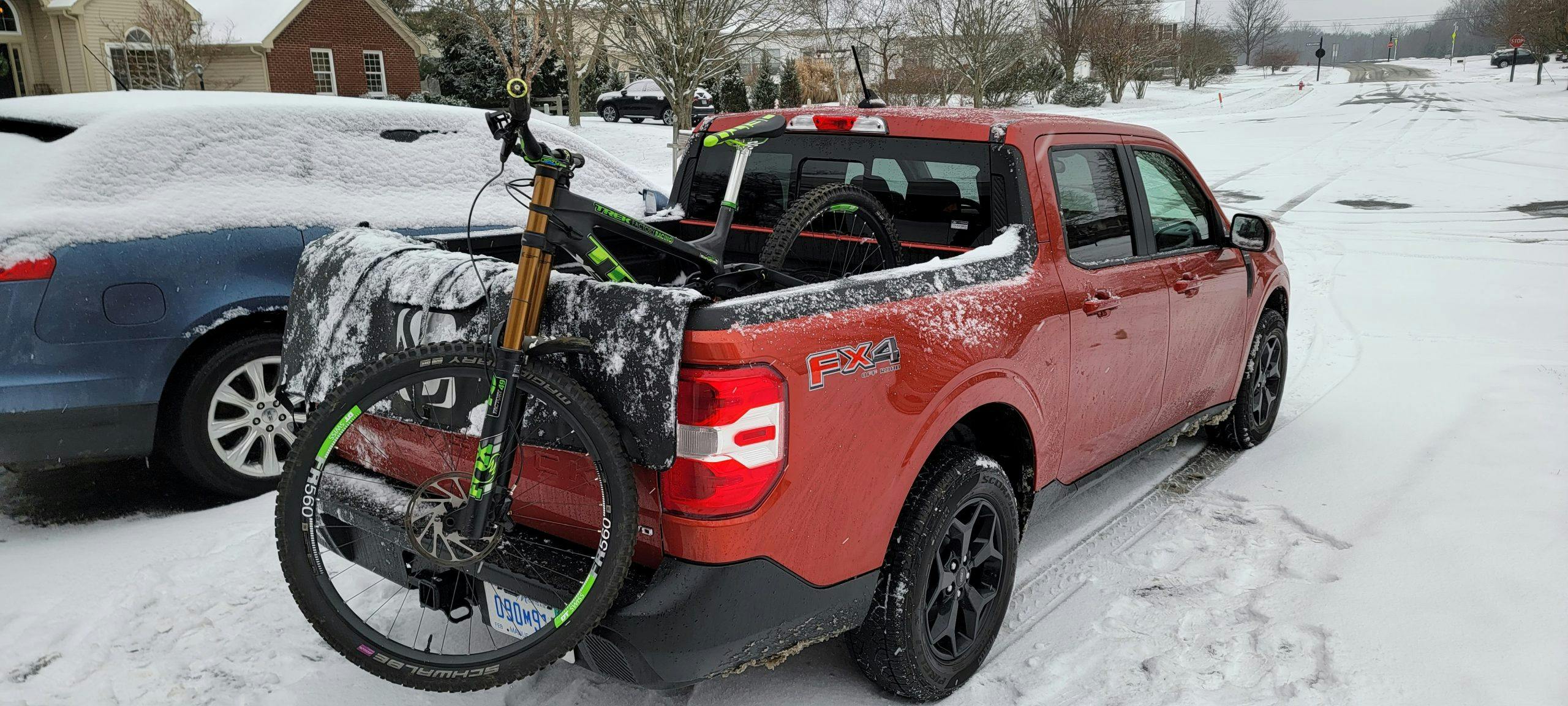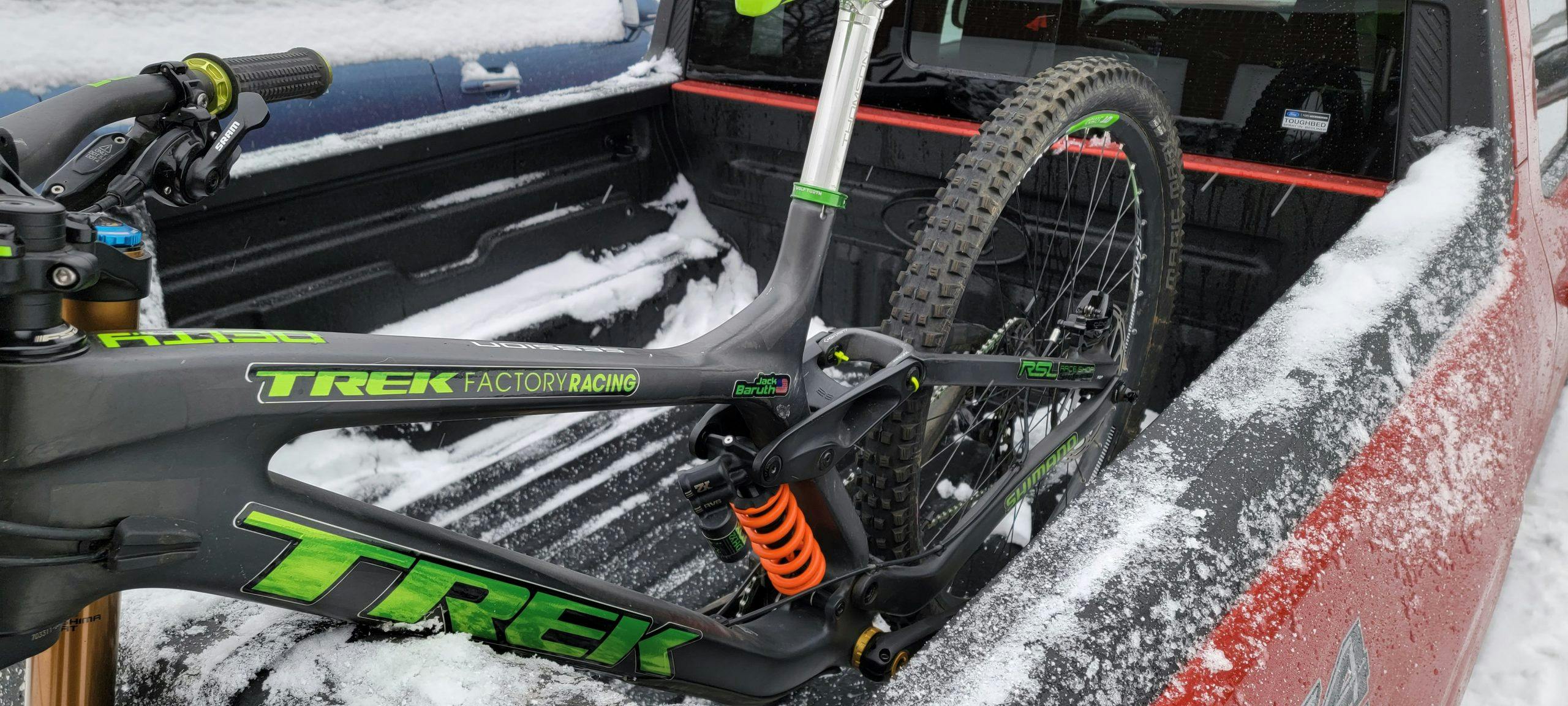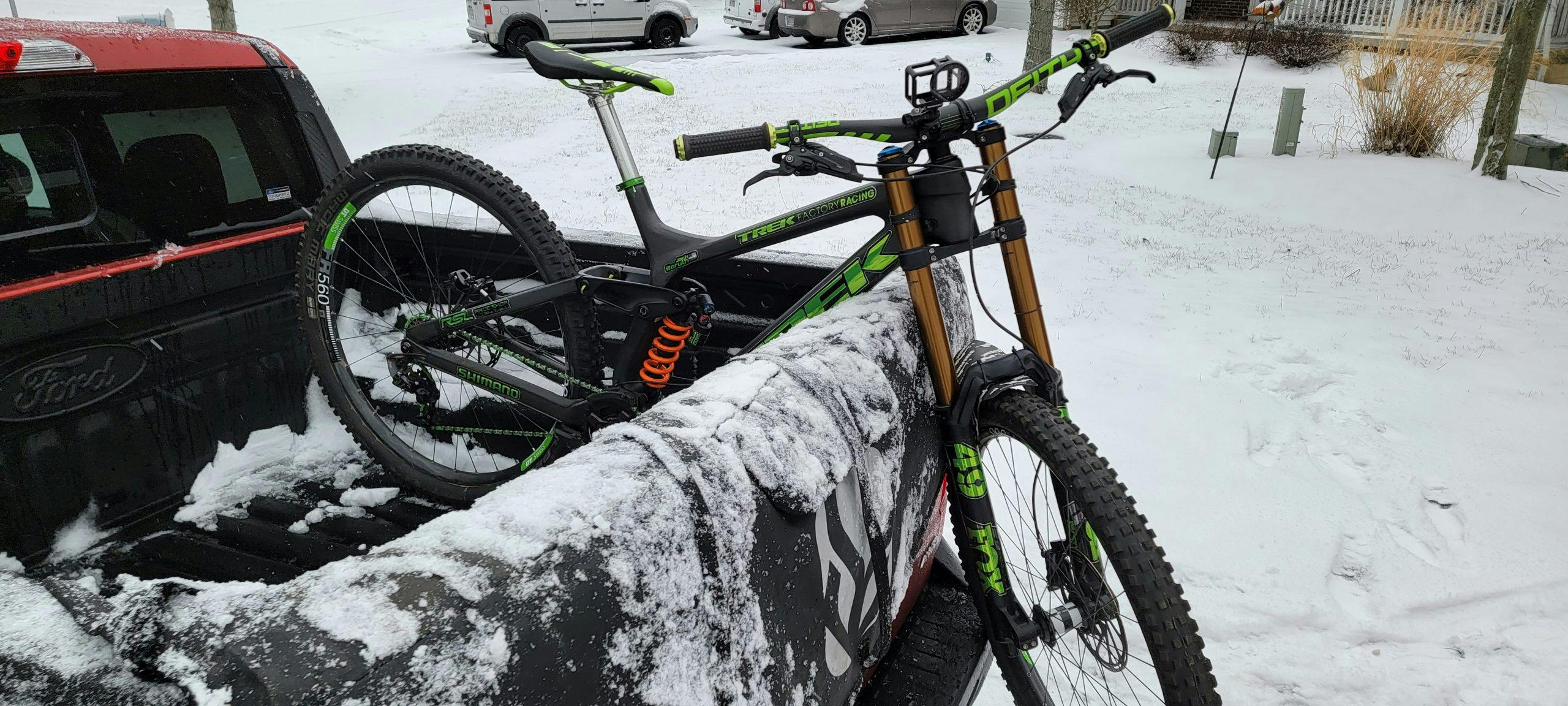Media | Articles
Avoidable Contact #135: I drove the most important car in years, and it’s great, but you can’t buy one

WARNING: If you failed the marshmallow test, you’re going to hate this column. Best to click “back” on the browser and check out the great work being done by the Hagerty digital staff. I don’t want you to be miserable over something you can’t have.
What? You’re still here? You must have iron-clad self-control—or, like Ford, you’re simply addicted to self-abuse.
Ford’s addicted to self-abuse?
Why, of course it is. The company just announced that it is “all in” on “BEVs,” or “battery electric vehicles,” also known as “stuff nobody wants to buy, ever, unless it has a Tesla badge and they live in a place where the Tesla badge has positive connotations.” Sources within the company tell me that there is no more money being allocated for development of future “ICEs,” or “cars that people actually buy.”
Perhaps that explains why, as of last week, the Ford Maverick Hybrid is sold out for 2022.
Marketplace
Buy and sell classics with confidence
In January 2022.
For the year.
Between now and the end of Thursday, you can still order a new Maverick with the 2.0-liter turbo and optional all-wheel-drive, but as I’ll explain below, that’s not the one you want. You want the hybrid, which uses the fourth generation of an absurdly everlasting “synergy drive” powertrain and returns 40 mpg in normal use. Just the ticket for this sort of vehicle, which doesn’t need to be fast but needs to be cheap if it is to make any sense. The turbo engine costs an extra $1085 ($4000-plus if you want AWD), returns 26 mpg in mixed use, and doesn’t have a history of thriving in NYC taxi use/abuse. The only reasons not to get the hybrid: if you genuinely need the AWD or the tow capacity. Everybody else will be thrilled with the “base” powerplant Maverick, which costs $4000 less than the base Prius while offering the nontrivial advantage of a highly usable pickup bed.

The week I just spent with a new Maverick convinced me that it’s the most important vehicle Ford has introduced in years. It will probably have the same historical impact as those oh-so-daring aluminum half-ton and 3/4-ton trucks, maybe more so. The last Blue Oval product that hit this hard with customers out of the gate was the original four-door Explorer from 28 years ago.
In any world operated by rational principles, Ford would do what it did with the 1964 1/2 Mustang, the 1986 Taurus, and the second-generation 1995 Explorer: It would move heaven and earth to ensure that every single person who wanted one had a chance to get their hands on one, even if it meant running two plants for three shifts a day. But in this world, Ford has decided to focus on the electric vehicles of the future, which means letting the Maverick—and its eager would-be owners—hang out to dry. Ten years from now, when you can’t walk between the hundreds of unsold battery-powered misery pods permanently parked at every Ford dealership lest you be smothered by cobwebs, feel free to remember the Great Maverick Sellout of 2022, and weep.
Why’s the Maverick selling out, anyway? What’s so great about this little unibody truck? I have a detailed answer to this, but perhaps you would prefer my son’s elevator pitch on the matter: “It’s like a better CR-V that can carry the mountain bikes.” That’s it. That’s the whole Maverick pitch. Res ipsa loquitur. Strictly speaking, of course, it’s not related to a CR-V. It’s a platform sibling of the Ford Escape, the Lincoln Corsair, and the surprisingly popular Ford Bronco Sport. (Someone coined the phrase “Diet Bronco” for the Bronco Sport, which might be the first genuinely insightful thing the social-media-addicted class of third-rate autowriters has ever said or thought.)
The genius of the Maverick is two-fold. The first half of it is the way the Maverick works. For most purposes, it’s exactly large enough. At the request of several mountain-biking friends, I put the Maverick through the ultimate bed-size test: I dragged my size-XL Trek Session 9.9 Carbon mountain bike out of hibernation and tossed it in back. Does it fit? With a few inches to spare! To my knowledge, there’s no common mountain bike bigger than an XL Session—it’s been called “a motorcycle with pedals”—so your cross-country MTB, road bike, or 29-inch-wheel “bikelife” street-scoot will fit with ease.
I then went to the Home Depot and bought $700 worth of plastic tubs for a project I’m trying to complete. They also fit, albeit barely. By the numbers, the Maverick can’t match my Lincoln MKT for passenger or cargo capacity, and you can’t fold the rear seats down and carry large items inside the cabin as you could with the Lincoln or any other crossover, but in practice the open bed is exceptionally usable. And it’s low. In fact, the whole truck is low. Lower than the Diet Bronco, and almost as low as the Escape. It’s trivial to put items in the bed, easy to step in and out of the passenger compartment, no trouble to drive in city traffic.
The Maverick’s interior, meanwhile, might singlehandedly take us back to the Golden Age Of Hard Plastic—and that’s a good thing. There are exposed bolt heads all over the place and a lot of trim pieces that have no softness or “give” to them. This iconoclastic repudiation of the soft-touch Audi-esque gospel that has dominated automotive thinking for 20 years sounds terrible when you read it on a screen or see it on a video, but in the metal, er, plastic, it’s great. A truck should be easy to wipe down. It shouldn’t be soft or porous on the inside.
And the driving experience? Very good. This is a quiet vehicle, particularly with the extra-thickness glass found in Lariat trims. The ride is decent, even on bad roads. Handling and braking are at family-sedan levels, which is all you really need. On the negative side of the ledger: The 2.0-liter turbo in my Lariat-grade tester wasn’t terribly charming, and the transmission to which it is paired is less so. In normal operation the Maverick will shift up until you’re lugging along the road at 1200 rpm or thereabouts; no doubt this is a solid strategy for the 6.7-liter “PowerStroke” diesel in the F-250, but for a 2.0-liter turbo it’s a ticket to very long delays before any power arrives for a passing maneuver. Remember, the whole point of buying the 2.0T is having extra power on demand, so neutering it via a cautious transmission is doubly ridiculous.
The second half of the Maverick’s genius, of course, is the way it looks. Ford could have given us a Ridgeline, or an Outback Baja, or a Hyundai Santa Cruz. Instead it gave us something that in its blocky, forthright ugliness is plainly a truck. Some people feel this is dishonest: A unibody Diet-Bronco-avec-bed shouldn’t pretend to be a miniature Super Duty. These people are killjoys. If Porsche can sell Audi SUVs with a fake-911 nose to the soy-latte crowd, I should be allowed to have an aggressive-looking unibody mini-truck. The styling is so deftly done; as with most good designs, you get the sense that the Maverick had to look this way, which is obviously bunk. It could have used the front end from the Escape or even the Corsair. Thankfully, it didn’t.

Is the Maverick perfect? No. The options packaging verges on the demented, with no cruise control available on base models and virtually every feature that most people want tucked inside a single “Lariat Luxury” equipment code that reprices this $19,999 truck into the $32,500 stratosphere and up. My tester, a non-Luxury-Package Lariat, didn’t have heated seats, a decent stereo, auto-dimming rearview mirror, seat tilt adjustment, wireless phone charging, remote start, or rear parking sensors. Maybe Ford is just leaving room for a Lincoln-badged Maverick, possibly called “Procrastinator” or something like that.
Minor quibbles aside, however, this is the perfect vehicle for so many of us. In a world where we no longer know our neighbors well enough to borrow a truck or ask for help, the Maverick is adequate to most trucky tasks while not punishing its owners with trucky drawbacks during all the times it’s hauling nothing but air. I think it would look lovely next to my new 3/4-ton truck—more about that in a future column—and I’d very much like to own one.
As previously discussed, that’s not going to happen. At least not anytime soon. I’m at the end of a very long list of would-be purchasers. Delayed gratification at its most punishing. Not something I’ve ever been much good at. But I can’t help but imagine driving this thing past the moribund BEV Ford lots a decade from now. My name is Maverick, truck of trucks! Look at my usability, ye BEVs, and despair!






















